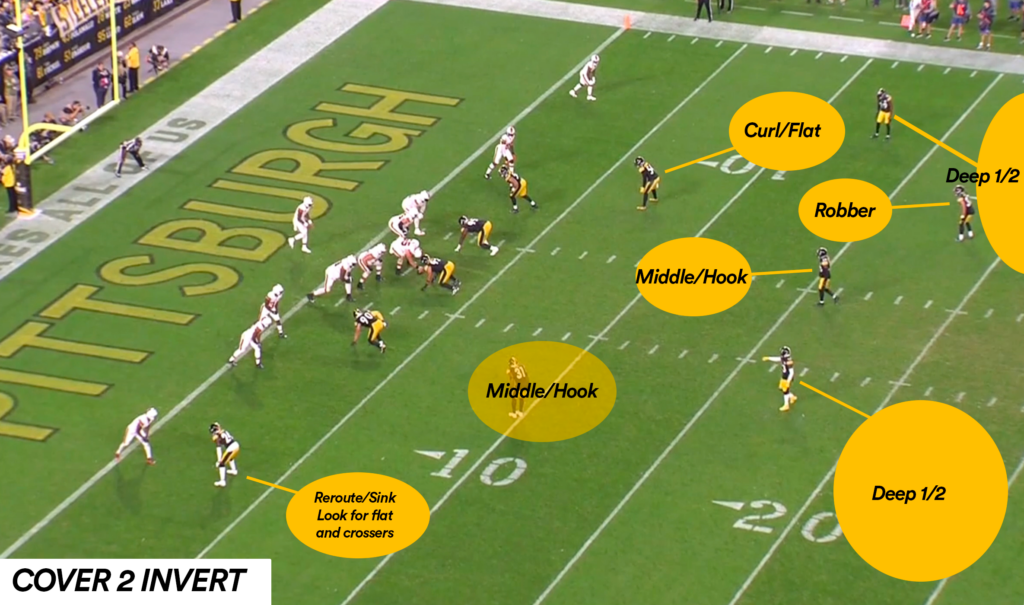Following each game in the 2023 Pittsburgh Steelers season, I will highlight the event or string of events in the game that is the turning point. Not all turning points will be earth-shattering but are meant to give a unique look at how we arrived at the outcome of the game, one that may be hard to see during the live watch.
In the chaotic world of football, sometimes it’s the smallest decisions that have the most profound impact. The Butterfly Effect theory claims that minor events can lead to significantly different outcomes, and in the Steelers’ thrilling 26-22 victory over the Cleveland Browns, this concept took center stage.
Entering the fourth quarter trailing 22-19, the Steelers’ offense was struggling, churning out a concerning negative seven yards and two punts. It wasn’t looking good for Pittsburgh, but as the saying goes: it ain’t over till it’s over.
Following another masterful punt from Pittsburgh’s Pressley Harvin III, the Browns found themselves pinned deep, a mere six yards from their own end zone. In a game this tight, the weight of every decision intensifies when your back is practically touching your own goal line. The margin for error? Razor-thin.
The Browns’ first-down play made that margin for error even thinner as they lost another three yards after LB Cole Holcomb came in off the edge untouched for a huge tackle for loss.
This set the stage for the fateful 3rd and 13 from the Browns’ three-yard line.
Here’s where things get interesting: Defensive Coordinator Teryl Austin opted to run a Cover-2 invert. To the untrained eye, this might seem like just another defensive scheme, but to those in the know, it’s a lightning rod for controversy.
In the NFL Twittersphere, it’s an almost universally hated coverage.
While the coverage offers a form of disguise and possible confusion to the opposing quarterback, it also leaves the defense in a lot of vulnerable spots and gets players playing positions and areas they aren’t traditionally used to patrolling.
As you may imagine, it creates issues.
Let’s take a look below pre-snap of how the Steelers are setup against on this third and 13 and where they’ll end up.
As you can see, this strategy closely mirrors a traditional Cover-2 look. The distinct variation lies in the 2-high safety rolling down into a “Robber” role, while the cornerback bails to cover the area the safeties previously occupied deep.
For this specific play, linebacker Kwon Alexander finds himself in an unconventional role, mimicking a cornerback as he extends into the curl-flat zone.
The main vulnerability in a traditional Cover-2 is the deep middle of the field with the possibility that quarterbacks also might try threading “turkey hole” shots, placed snugly between the corners and safeties along the sidelines. When this structure shifts to an invert Cover-2, these susceptibilities only magnify, compounded by players rapidly retreating to their designated zones.
That’s exactly what happens on this third and 13.
As you can see at the bottom half of the screen, where they’re running traditional Cover-2, you get a cornerback who reroutes and funnels the outside wide receiver into the rest of the defense. Now, with the inverted Cover-2 corner at the top of the screen bailing, that doesn’t happen. This lets the wide receiver run freely down the boundary.
Recognizing the hole left by the backpedaling Levi Wallace, the receiver wisely settles into the gap. With Alexander (No. 54) not expanding his zone enough it leaves an easy pitch and catch from Watson to WR Elijah Moore for the first down.
Given the magnitude of that down within the game’s context, Defensive Coordinator Teryl Austin’s decision raised eyebrows. Monday Night Football’s commentator, Troy Aikman, was especially vocal from his vantage point in the booth.
“[Austin] going to be replaying that call in his mind tonight, especially depending on the outcome of this drive.”
In that fleeting moment, Austin might have regretted not making a different call, envisioning a scenario where his defense successfully stifled the Browns right then and there. Yet, in the delicate dance of cause and effect — much like the butterfly effect where a small change can result in significant outcomes — had that been the scenario, the Steelers’ eventual victory might not have transpired.
Because a mere two plays later, the game’s pivotal moment, its true turning point, would unfold.
The Browns go with a play-action look and OLB Alex Highsmith’s speed and get-off is just too much for Browns LT Jedrick Wills Jr., who barely gets a finger on him.
Highsmith is able to turn the corner and get the ball out of the hands of Watson and the aware eyes of T.J. Watt are able to find the ball, scoop, and score.
In the post-game interview, Watt revealed that both he and Highsmith had predicted the Browns’ play. This wasn’t just good luck. It was a combination of preparation, instinct, and perhaps, a touch of that Butterfly Effect magic.
In the end, it’s a reminder of how football, much like life, is unpredictable. One minute you’re critiquing a defensive play, the next you’re witnessing a game-changing touchdown. On this night, what started as a questionable defensive call transformed into a play that would define the game. In the NFL, where split-second decisions often lead to unpredictable outcomes, the Steelers proved that every flutter, every choice, can change the course of history.
Or at least a game.









